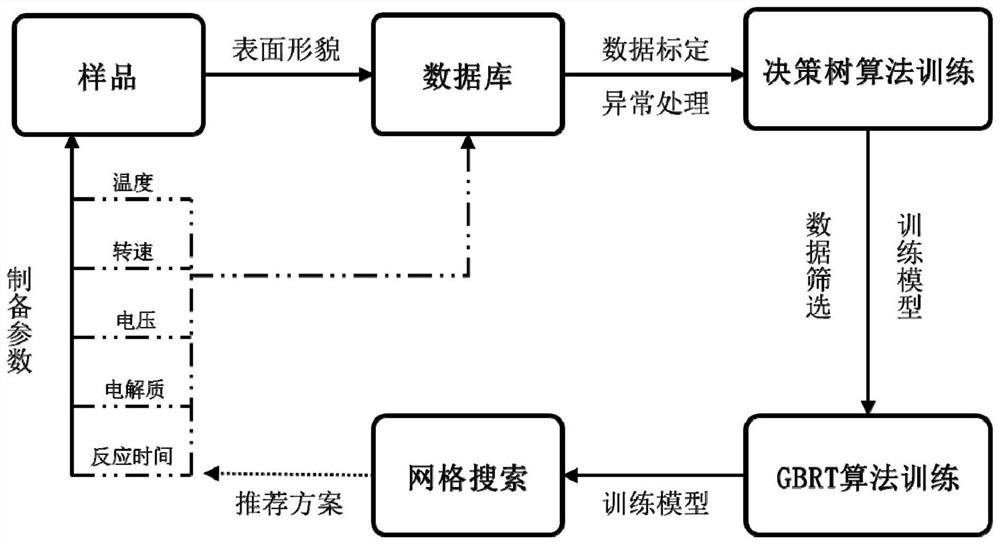一种机器学习辅助优化梯度二氧化钛纳米管微图案的方法,涉及梯度TiO2纳米管微图案制备。1)设定相关实验条件制备TiO2纳米管微图案并进行表征,获取实验数据;2)所得实验数据预处理及机器学习建模;3)机器学习模型进行预测并推荐优化实验方案;4)实验验证预测结果,并补充数据,迭代步骤1)~4)。能自动化的实现扩充样本数据、自我学习、自动训练出满足预设精度的模型;自动构建预测材料“参数‑结构‑性质”主动学习框架,实现材料智能生成和材料逆向设计。能在较少的实验条件下寻得氟化铵/水/丙三醇体系下利用双极氧化法一步制备得到的最大梯度范围的TiO2纳米管微图案样品及其实验条件。操作简单方便、操作耗时短。
A method for optimizing gradient titania nanotube micropatterns assisted by machine learning, which relates to the preparation of gradient TiO2 nanotube micropatterns. 1) Setting relevant experimental conditions to prepare TiO2 nanotube micropatterns and characterize them to obtain experimental data; 2) Preprocessing and machine learning modeling of the experimental data obtained; 3) Using machine learning models to predict and recommend optimized experimental schemes; 4) Verifying the prediction results by experiments and supplement the data, and iterate steps 1) to 4). It can automatically expand sample data, self-learn, and automatically train a model that meets the preset accuracy; automatically build a predictive material "parameter-structure-property" active learning framework to achieve intelligent material generation and material reverse design. Under the ammonium fluoride/water/glycerol system, the TiO2 nanotube micropattern samples with the largest gradient range was prepared by the bipolar oxidation method through less experiments. The operation is simple, convenient and time-saving.
